Welcome to the lush world of Begonia Venosa, where the vibrant hues and delicate textures of this botanical wonder take center stage.
As a seasoned enthusiast who has cultivated Begonia Venosa, let me share with you this green wonder that effortlessly combines elegance and resilience, turning any space into a green oasis.
Key Takeaways
- Unique Origin: Begonia Venosa traces its roots to the lush landscapes of Brazil, thriving in the dappled sunlight of its native rainforests.
- Leafy Marvels: One of the most distinctive features is its leaves, adorned with intricate silver veins resembling delicate lacework.
- Adaptability Champion: Versatile and hardy, this begonia can adapt to various conditions, making it a perfect companion for both seasoned plant enthusiasts and green thumbs in the making.
- Historical Charm: With a history dating back to the Victorian era, Begonia Venosa has been charming plant enthusiasts for generations, adding a touch of timeless elegance to gardens.
- Natural Air Purifier: Beyond its aesthetic appeal, this begonia contributes to a healthier living environment by purifying the air, making it both a visual and wellness asset to your space.

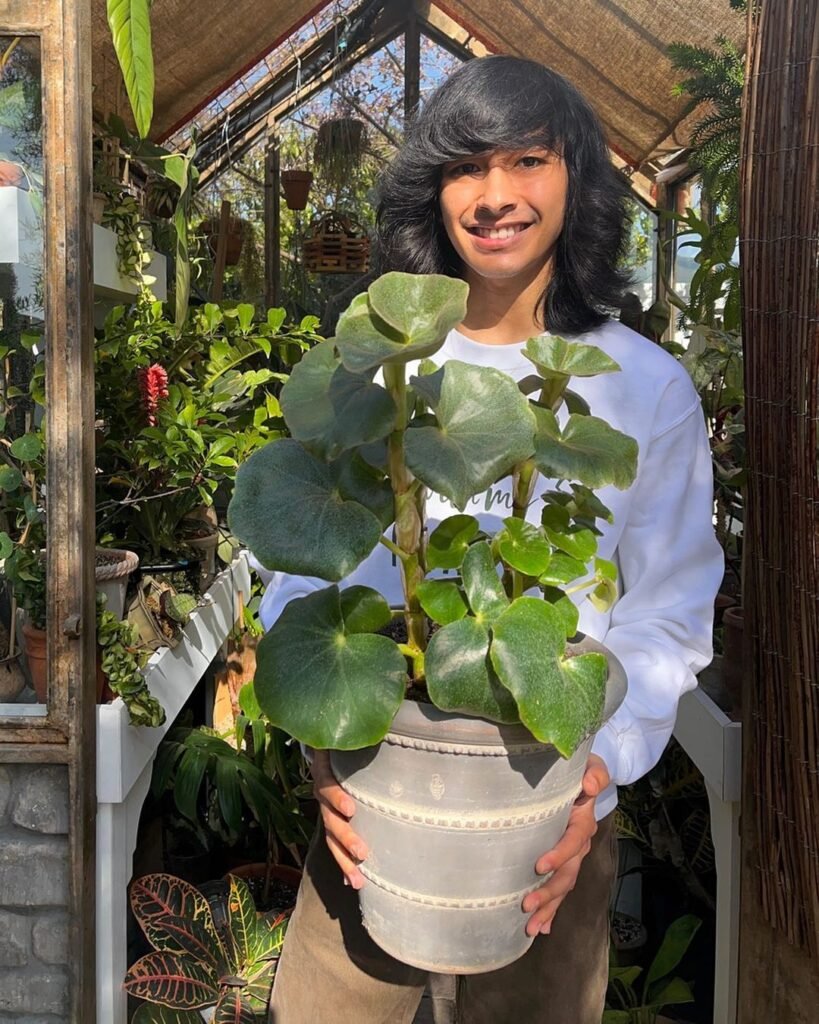

Care Guide Overview
| Care Aspect | Guidance |
|---|---|
| 🌧️ Watering | Ensure the soil remains consistently moist but not waterlogged. |
| ☀️ Lighting | Provide bright, indirect light to mimic its natural habitat. Avoid prolonged exposure to harsh sunlight. |
| 🌱 Soil and Fertilizing | Opt for a well-draining soil mix enriched with organic matter. Fertilize every 4-6 weeks during the growing season. |
| 💨 Humidity and Temperature | Maintain a warm and humid environment; ideally, between 65-75°F (18-24°C) with humidity levels around 50-60%. |
| ✂️ Pruning and Shaping | Trim leggy stems to encourage bushier growth. Pinch off spent flowers for a neater appearance. |
| 🌱 Propagation | Propagate through leaf cuttings or stem cuttings during the active growing season. |
| 🌱 Repotting | Repot every 1-2 years to refresh the soil and provide more space for growth. |
| 🍂 Seasonal Care | Adjust care routine in response to the seasons; reduce watering in winter and increase humidity in summer. |
| 🌿 Companion Plants | Pair with plants that share similar light and moisture preferences, such as ferns or ivy. |
| 🐞 Pest Control | Keep a watchful eye for pests; wipe leaves regularly, and consider introducing beneficial insects for natural control. |
| 🌱 Reviving Tips | If your begonia appears stressed, evaluate and adjust care elements accordingly. Consider providing extra humidity or adjusting lighting conditions. |
Appearance of Begonia Venosa

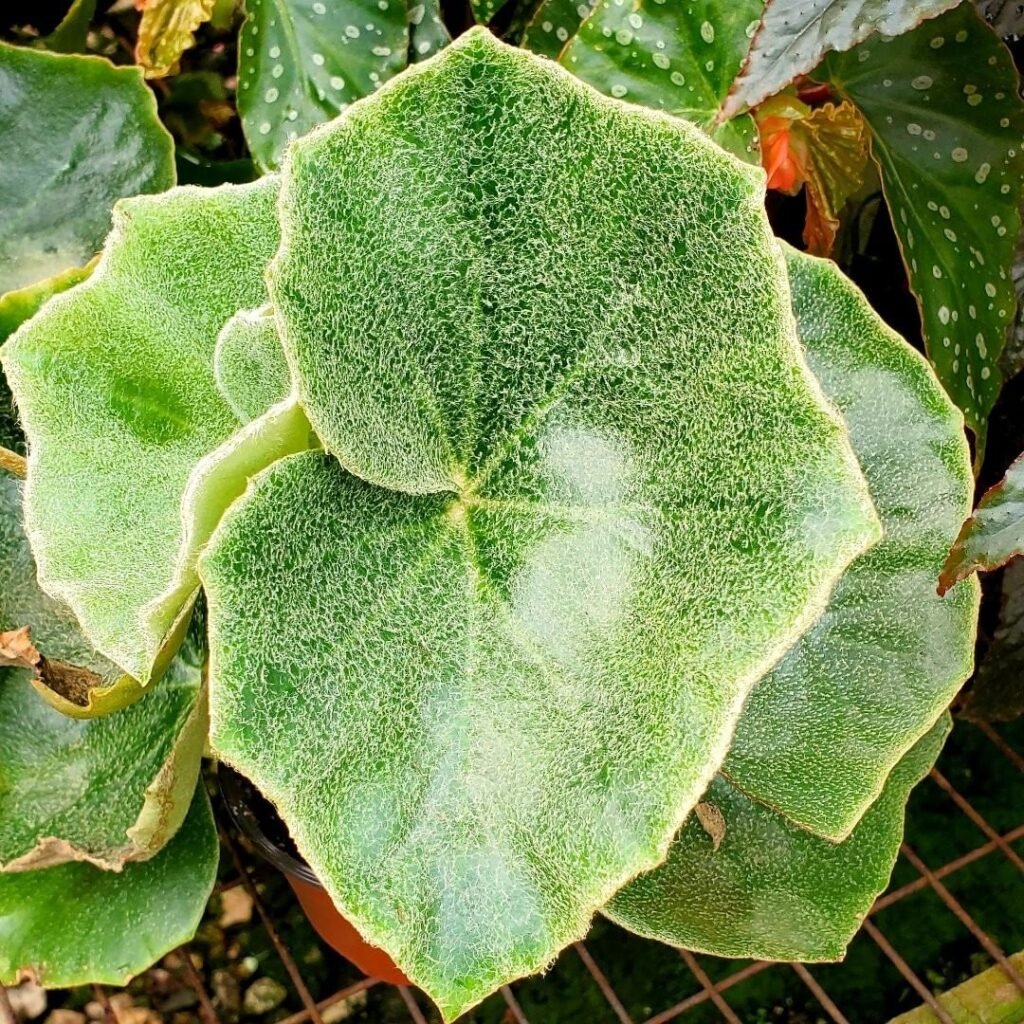
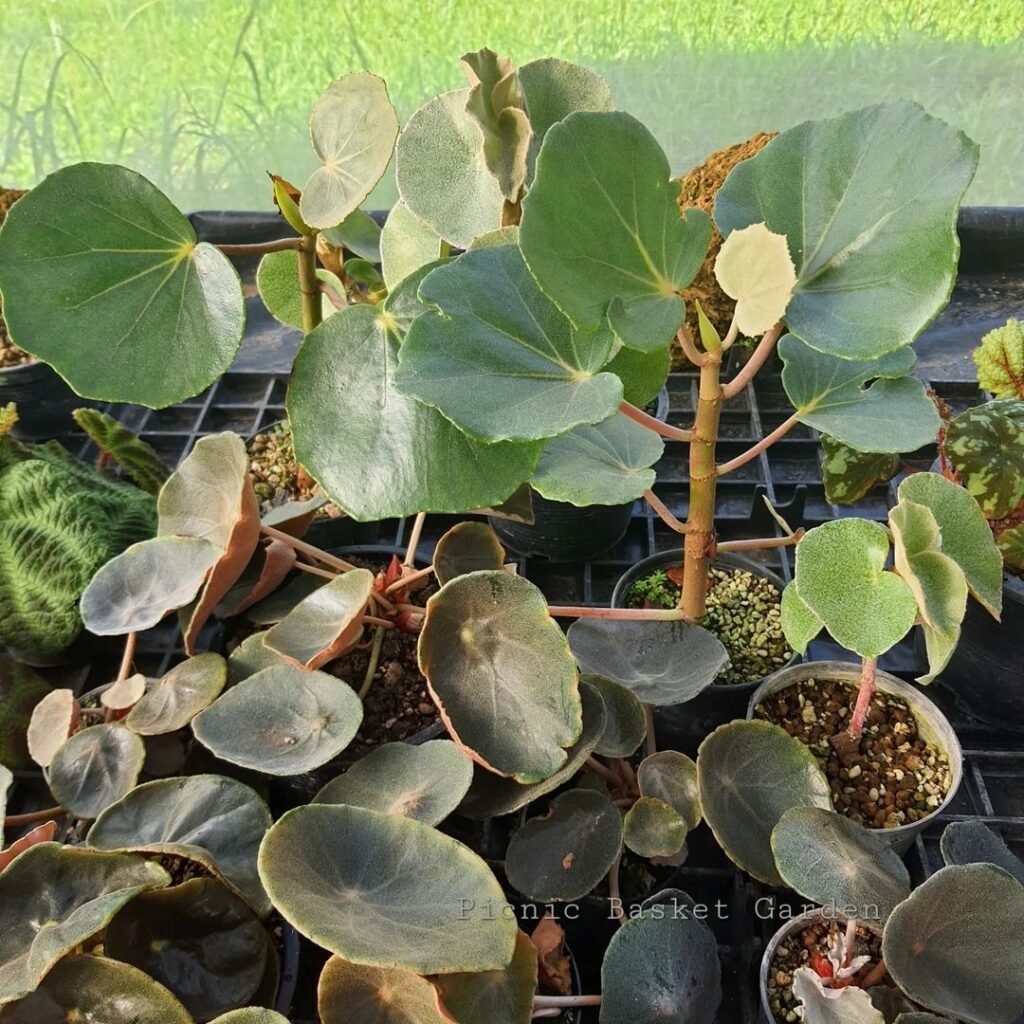
- Leaves: The heart-shaped leaves are a lush canvas, featuring a deep green backdrop adorned with striking silver veins that intricately crisscross like nature’s own embroidery. The veins create a mesmerizing pattern, adding an elegant touch to the foliage.
- Size: In terms of size, expect your Begonia Venosa to reach a moderate height of about 12 to 18 inches (30 to 45 cm). Its compact stature makes it a versatile choice for various spaces, from tabletops to hanging baskets.
- Texture: Run your fingers over the leaves, and you’ll notice a smooth, almost velvety texture. This tactile quality enhances the sensory experience.
- Blossoms: While the begonia is primarily celebrated for its foliage, it does produce delicate blooms. Small, inconspicuous flowers appear in clusters. The flowers can range in color, often presenting hues of white, pink, or red.
- Growth Pattern: Begonia Venosa tends to grow in a mounding, bushy form. Regular pruning can help shape its growth, promoting a more compact and aesthetically pleasing silhouette.
Not the plant for you? Check out my full list of 78 Types of Begonia!
How to Grow Begonia Venosa
🌧️ Watering
- Moisture Mastery: Keep the soil consistently moist, but beware of overwatering. Allow the top inch of soil to dry out slightly before the next watering session. A well-draining potting mix aids in preventing waterlogged roots.
Care Tip: Begonia Venosa is sensitive to water quality. Consider using distilled or rainwater to prevent the accumulation of mineral deposits in the soil.
☀️ Lighting
- Bright Indirect Light: Mimic the begonia’s natural habitat by providing bright, indirect light. Avoid exposing it to prolonged, harsh sunlight, as this can scorch the delicate leaves.
- Rotate for Balance: To ensure even growth and prevent the plant from leaning towards the light source, periodically rotate your begonia. This promotes a more symmetrical and aesthetically pleasing appearance.
🌱 Soil and Fertilizing
- Well-Draining Mix: Opt for a potting mix that is not only rich in organic matter but also well-draining. This prevents waterlogged roots, which can lead to root rot.
- Fertilize Wisely: Feed your begonia every 4-6 weeks during the growing season with a balanced, water-soluble fertilizer. Dilute the fertilizer to half the recommended strength to prevent overfeeding.
💨 Humidity and Temperature
- Tropical Atmosphere: Begonia Venosa thrives in a warm and humid environment. Maintain temperatures between 65-75°F (18-24°C) and humidity levels around 50-60%. Consider using a humidifier to create an ideal microclimate.
Care Tip: During the colder months, when indoor heating can reduce humidity, place a tray filled with water and pebbles near your begonia to enhance moisture levels.
✂️ Pruning and Shaping Tips
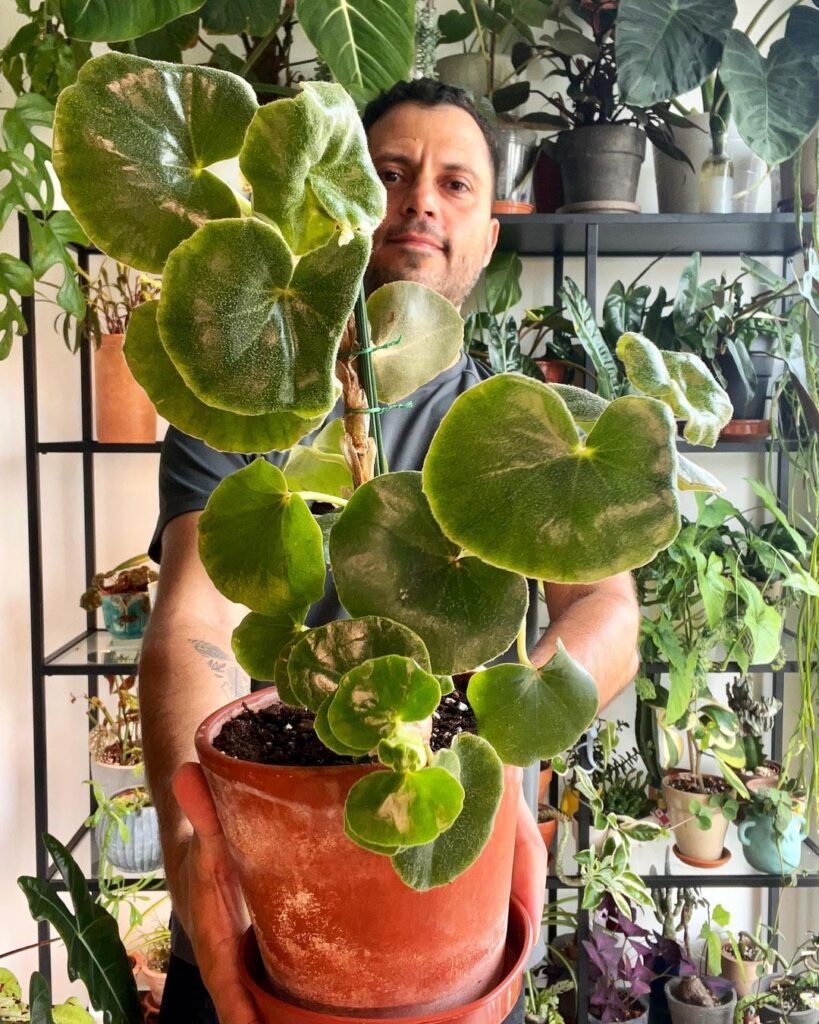
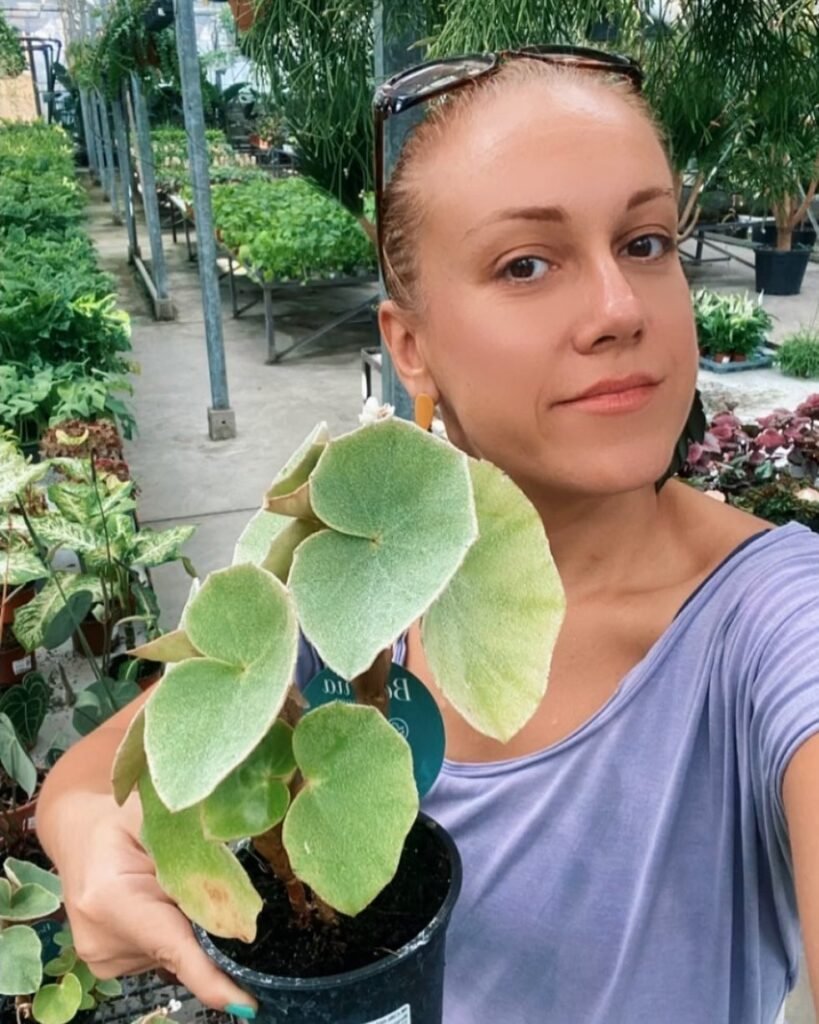

Maintaining the aesthetic appeal of your Begonia Venosa involves thoughtful pruning and shaping. By understanding the plant’s growth patterns and employing specialized techniques, you can sculpt a begonia masterpiece.
Regular Pruning Techniques
- Deadheading: Remove spent flowers regularly to encourage continuous blooming and divert the plant’s energy towards new growth.
- Pinching: Gently pinch the tips of young stems to stimulate branching. This promotes a bushier and more compact growth habit.
Shaping for Symmetry
- Selective Trimming: Identify leggy stems and trim them back to maintain a balanced and symmetrical appearance.
- Crown Pruning: Trim the upper portion of the plant’s central stems to encourage lateral growth, resulting in a fuller and more rounded shape.
| Month | Pruning Task |
|---|---|
| Spring | Deadhead spent flowers, pinch tips. |
| Summer | Trim leggy stems, shape for symmetry. |
| Fall | Reduce overall size for winter dormancy. |
| Winter | Light pruning if necessary, focusing on shaping. |
🌱 Propagation Tips
Propagating Begonia Venosa opens the door to sharing its beauty with others or expanding your begonia family.
Leaf Cuttings
- Select Healthy Leaves: Choose mature, healthy leaves. Cut them into sections, ensuring each section has a vein.
- Rooting Medium: Plant the leaf sections in a well-draining rooting medium, ensuring the cut side is inserted into the soil.
- High Humidity: Maintain high humidity by covering the cuttings with a plastic dome or placing them in a plastic bag until roots develop.
Stem Cuttings
- Choose Vigorous Stems: Select non-flowering stems and cut them just below a node, which is the point where leaves attach to the stem.
- Rooting Hormone: Dip the cut end in rooting hormone to stimulate root development.
- Plant in Soil: Insert the cut end into a well-draining soil mix, keeping the soil consistently moist until roots establish.
| Propagation Method | Difficulty Level | Time to Rooting | Success Rate |
|---|---|---|---|
| Leaf Cuttings | Moderate | 4-6 weeks | High |
| Stem Cuttings | Easy | 2-4 weeks | Moderate to High |
🌱 Repotting Tips



Begonia Venosa occasionally outgrows its pot, and repotting is a rejuvenating process crucial for its continued health and vitality. Mastering the art of repotting ensures your begonia has ample space to thrive.
Signs It’s Time to Repot
- Root Crowding: If you notice roots circling the pot’s edges or emerging from the drainage holes, it’s a clear sign your begonia needs more space.
- Slow Growth: A sluggish growth rate, despite adequate care, may indicate nutrient depletion in the soil. Repotting replenishes the soil’s nutrients.
Specialized Techniques
- Division: For larger begonias, consider dividing the plant during repotting. Gently separate the root ball into sections, ensuring each section has healthy roots and foliage.
- Topdressing: Rather than a full repot, you can opt for topdressing. Remove the top layer of soil and replace it with fresh, nutrient-rich soil.
Care Tip: Water Wisley, After repotting, allow the plant to settle for a few days before resuming the regular watering schedule. This gives the roots time to acclimate to their new environment.
🍂 Seasonal Care
Adapting your care routine with the changing seasons is key to ensuring your Begonia Venosa thrives year-round. Each season brings unique challenges and opportunities for optimal care.
Winter Dormancy
- Reduced Watering: As the plant enters dormancy, reduce watering to prevent root rot. Allow the top inch of soil to dry out between waterings.
- Protect from Drafts: Place your begonia away from drafts during the winter months, as it may become more susceptible to temperature fluctuations.
Summer Splendor
- Increased Humidity: During the warmer months, elevate humidity levels around your begonia. Grouping plants together or using a humidifier can create an ideal microclimate.
- Filtered Sunlight: Shield your begonia from intense midday sun during the summer. Filtered sunlight or partial shade is preferable to prevent leaf scorch.
Care Tip: Observe and Adjust, Regularly observe your begonia’s response to seasonal changes. Adjust watering, lighting, and humidity levels accordingly to ensure it thrives in each unique season.
🌿 Companion Plants
Selecting the right companions for your Begonia Venosa is like curating a botanical entourage, creating a harmonious environment that enhances the beauty of each plant. Choose companions that share similar care needs and complement the aesthetics of your begonia.
Compatible Companions
- Ferns: Delicate and graceful ferns make excellent companions, thriving in the same humidity levels as Begonia Venosa.
- Ivy: With its trailing vines, ivy complements the bushy form of the begonia. Choose varieties that prefer similar lighting conditions.
- Snake Plant (Sansevieria): Known for its air-purifying qualities, the snake plant can enhance the overall well-being of your botanical space.
Contrasting Textures
- Calathea: The bold patterns and different leaf shapes of Calathea provide a striking visual contrast, creating an eye-catching display.
- Pothos: Versatile and low-maintenance, pothos adds a cascading element, creating layers of greenery in your plant arrangement.
| Companion Plant | Light Requirements | Humidity Preference | Care Notes |
|---|---|---|---|
| Ferns | Indirect Light | High | Keep soil consistently moist; mist regularly. |
| Ivy | Bright Indirect Light | Moderate to High | Allow soil to dry out slightly between waterings. |
| Snake Plant | Indirect Light | Low to Moderate | Thrives in a well-draining soil; water sparingly. |
| Calathea | Indirect Light | High | Maintain high humidity; avoid direct sunlight. |
| Pothos | Low to Medium Light | Low to Moderate | Allow soil to dry out between waterings; adaptable. |
If you’re thinking of extending your begonia plant family, I recommend reading up on begonia thelmae and begonia white ice. They both would make great additions to your squad!
🐞 Pest Control Tips
Protecting your Begonia Venosa from pests is a crucial aspect of maintaining its health and vitality. By implementing strategic pest control methods, you can keep your begonia thriving and pest-free.
Preventive Measures
- Isolation: When introducing new plants, quarantine them for a few weeks to ensure they are free of pests before placing them near your begonia.
- Neem Oil Spray: Create a neem oil spray by diluting neem oil in water and misting your begonia regularly. Neem oil acts as a natural deterrent for many common pests.
Specialized Pest Control
- Beneficial Insects: Introduce predatory insects like ladybugs or predatory mites to keep pest populations in check. These natural predators can effectively control common pests like aphids.
- Diatomaceous Earth: Sprinkle food-grade diatomaceous earth on the soil surface. This natural substance is abrasive to pests but harmless to plants, providing an effective barrier.
| Pest | Signs of Infestation | Control Methods |
|---|---|---|
| Aphids | Stunted growth, curled leaves | Neem oil spray, beneficial insects, insecticidal soap. |
| Spider Mites | Fine webbing, yellowing leaves | Neem oil spray, predatory mites, regular misting. |
| Mealybugs | White cottony clusters | Isopropyl alcohol on a cotton swab, neem oil spray. |
| Scale Insects | Brown or white scales on stems | Manual removal, neem oil spray, insecticidal soap. |
🌱 Reviving a Sick or Wilting Begonia Venosa
Witnessing your beloved Begonia Venosa in distress can be disheartening, but with targeted care and a bit of botanical know-how, you can nurse it back to health. Recognizing the signs of stress and implementing specialized revival methods is the key to restoring its vibrancy.
Signs of Distress
- Wilting Leaves: If the leaves are drooping or wilting, it’s a clear sign of stress. Check the soil moisture immediately.
- Yellowing or Browning Edges: Discoloration along the leaf edges indicates potential overwatering or underwatering issues.
Specialized Revival Methods
- Root Inspection: Gently remove the plant from its pot and examine the roots. Trim any rotting or damaged roots, and repot in fresh, well-draining soil.
- Watering Adjustment: Adjust your watering routine based on the specific needs of your begonia. If overwatering is the issue, allow the soil to dry out before the next watering.
- Humidity Boost: Place a tray filled with water and pebbles near the begonia to increase humidity levels, especially if the plant is showing signs of stress in dry conditions.
Care Tip: Patience and Observation, Reviving a sick or wilting begonia requires patience. After implementing corrective measures, observe the plant’s response over several days before making additional adjustments. Rushed interventions may cause further stress.
🌿 Conclusion
In the rich tapestry of botanical wonders, the Begonia Venosa stands as a testament to nature’s artistry. From its intricate silver veins to the delicate blossoms, this begonia captivates the hearts of plant enthusiasts.
As you embark on the journey of cultivating and caring for Begonia Venosa, remember that each leaf, each bloom, tells a story of resilience and beauty. By following the guidelines laid out in this comprehensive guide, you’re not just tending to a plant; you’re nurturing a living masterpiece.
So, let your botanical passion flourish, let your begonia thrive, and may your green oasis be filled with the timeless elegance of the remarkable Begonia Venosa. Happy planting!
FAQs
Can Begonia Venosa thrive in low-light conditions?
Begonia Venosa prefers bright, indirect light. While it can tolerate lower light levels, it may result in slower growth and fewer blooms. Providing ample, filtered sunlight is ideal for optimal health and vibrancy.
Is misting necessary for the humidity needs of Begonia Venosa?
Misting can be beneficial, especially in drier climates or indoor environments with low humidity. However, a more effective method is to place a tray with water and pebbles near the begonia to create a localized humid microclimate.
How often should I fertilize my Begonia Venosa?
Fertilize your begonia every 4-6 weeks during the growing season, using a balanced, water-soluble fertilizer. It’s advisable to dilute the fertilizer to half the recommended strength to prevent overfeeding.
Can I propagate Begonia Venosa from seeds?
While it is technically possible to propagate begonias from seeds, it’s a more challenging method. Begonia Venosa is commonly propagated through leaf cuttings or stem cuttings, which yield more consistent and reliable results.
What pests commonly affect Begonia Venosa, and how can I control them?
Common pests include aphids, spider mites, mealybugs, and scale insects. Control methods include neem oil spray, beneficial insects like ladybugs, and using diatomaceous earth as a natural deterrent. Regularly inspect and treat your begonia to prevent infestations.
How do I know if my Begonia Venosa is dormant in the winter?
During winter dormancy, your begonia may exhibit slower growth, reduced flowering, and a tendency to drop leaves. Adjust your watering routine by allowing the top inch of soil to dry out between waterings, and provide protection from drafts to promote a healthy winter dormancy.
Can I keep Begonia Venosa outdoors year-round?
Begonia Venosa is sensitive to cold temperatures and cannot tolerate frost. If you live in a region with cold winters, it’s advisable to bring your begonia indoors or provide protective coverings to shield it from the harsh weather conditions.

Writer/Green Thumb/Explorer – Rooted deep in the rich soils of Devon, I’ve cultivated a vast expertise in plant care, helping greenery thrive in homes across the UK. When I’m not crafting detailed plant care guides, I’m journeying through the lush landscapes of the West Country, unearthing nature’s secrets and sharing them with fellow plant enthusiasts. Every leaf has a story, and I’m here to tell it.





